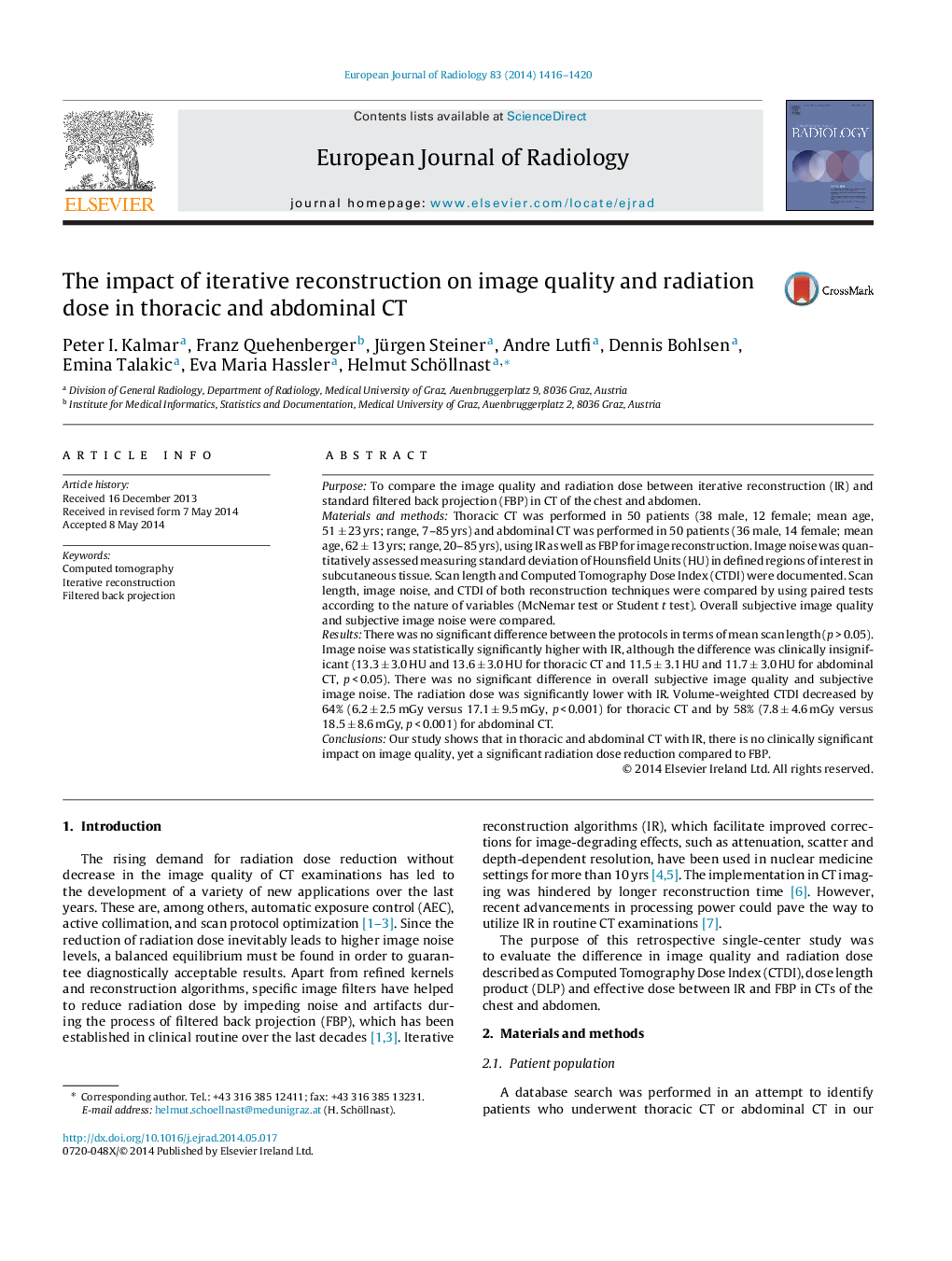| Article ID | Journal | Published Year | Pages | File Type |
|---|---|---|---|---|
| 4225211 | European Journal of Radiology | 2014 | 5 Pages |
PurposeTo compare the image quality and radiation dose between iterative reconstruction (IR) and standard filtered back projection (FBP) in CT of the chest and abdomen.Materials and methodsThoracic CT was performed in 50 patients (38 male, 12 female; mean age, 51 ± 23 yrs; range, 7–85 yrs) and abdominal CT was performed in 50 patients (36 male, 14 female; mean age, 62 ± 13 yrs; range, 20–85 yrs), using IR as well as FBP for image reconstruction. Image noise was quantitatively assessed measuring standard deviation of Hounsfield Units (HU) in defined regions of interest in subcutaneous tissue. Scan length and Computed Tomography Dose Index (CTDI) were documented. Scan length, image noise, and CTDI of both reconstruction techniques were compared by using paired tests according to the nature of variables (McNemar test or Student t test). Overall subjective image quality and subjective image noise were compared.ResultsThere was no significant difference between the protocols in terms of mean scan length (p > 0.05). Image noise was statistically significantly higher with IR, although the difference was clinically insignificant (13.3 ± 3.0 HU and 13.6 ± 3.0 HU for thoracic CT and 11.5 ± 3.1 HU and 11.7 ± 3.0 HU for abdominal CT, p < 0.05). There was no significant difference in overall subjective image quality and subjective image noise. The radiation dose was significantly lower with IR. Volume-weighted CTDI decreased by 64% (6.2 ± 2.5 mGy versus 17.1 ± 9.5 mGy, p < 0.001) for thoracic CT and by 58% (7.8 ± 4.6 mGy versus 18.5 ± 8.6 mGy, p < 0.001) for abdominal CT.ConclusionsOur study shows that in thoracic and abdominal CT with IR, there is no clinically significant impact on image quality, yet a significant radiation dose reduction compared to FBP.
